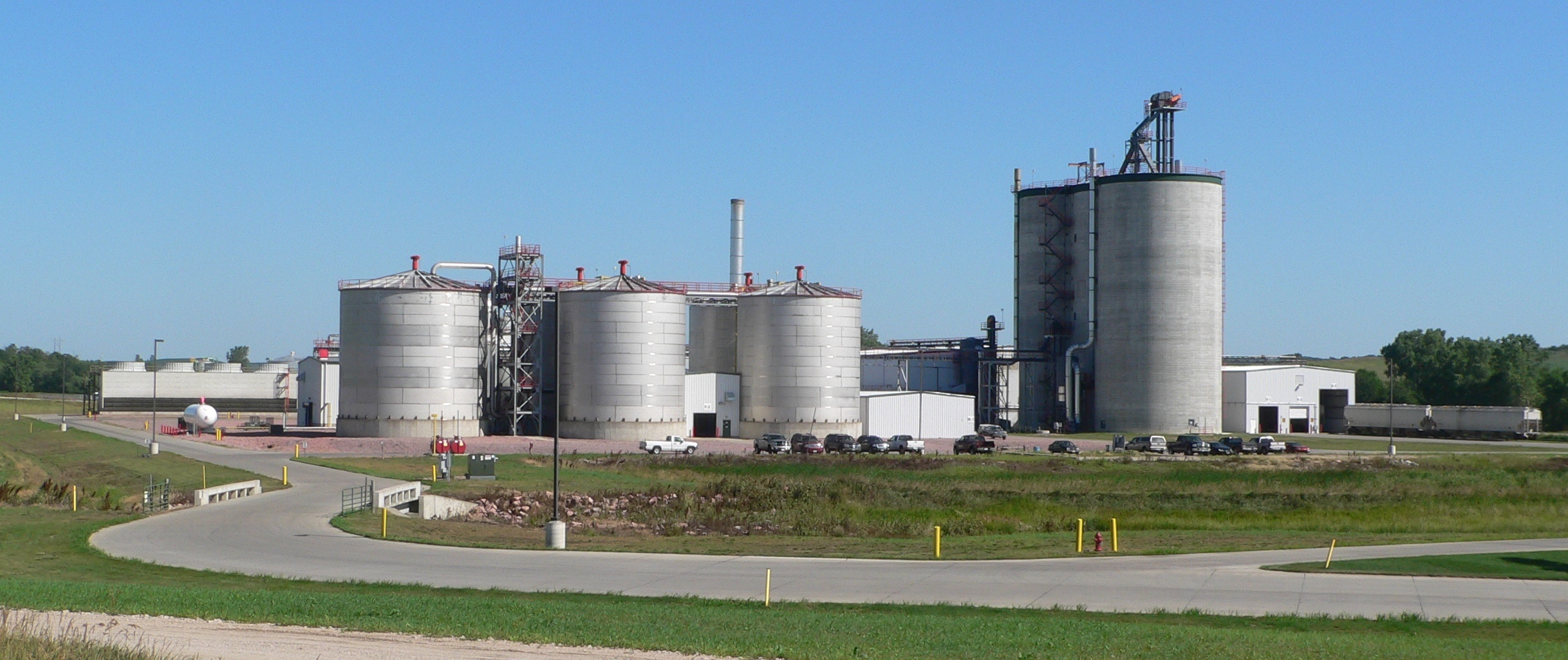This post is one in a series featuring the complete slate of advanced energy technologies outlined in the report This Is Advanced Energy. 
Siouxland ethanol plant on U.S. Highway 20, west of Jackson, Nebraska.
First generation biofuels are liquid transportation fuels produced from existing food crops. In the United States, these are ethanol, derived mainly from corn via fermentation, and biodiesel, produced mainly from soybeans via transesterification. Both of these fuel pathways are well integrated into the agricultural economy, producing a range of co-products such as high-protein animal feed. These two fuels have well-developed production technologies and supply chains, and incremental improvements have increased yields and reduced costs. In particular, the ethanol yield (measured in gallons per bushel) has steadily increased over the years, and the energy inputs (typically electricity and natural gas) required to produce a gallon of ethanol have fallen by more than one third in the past 20 years. Other innovations, such as using field crop residues and other sources of biomass in place of natural gas, have further increased the “energy yield” of corn ethanol (the energy produced as ethanol compared to the fossil fuel inputs to the process). Small amounts of biodiesel are also made from waste cooking oil collected from commercial food establishments.
First generation biofuels account for a meaningful share of transport fuel use. By volume, ethanol represents approximately 10% of the U.S. gasoline pool, and biodiesel about 3% of the diesel pool. Total production in 2014 was 14.3 billion gallons of ethanol and 1.4 billion gallons of biodiesel.4,5 The market for first generation biofuels has been relatively flat the past few years due to practical limitations on how much biofuel can be blended with conventional fuel without requiring vehicle modifications. Ethanol can be used in existing gasoline internal combustion engines in blends up to 10% (E10), although extensive testing on blends up to 15% (E15) has shown that cars built in 2001 or later can use this higher blend. So-called flex-fuel vehicles (FFVs) can burna mixture as high as 85% ethanol (E85), and over 17 million FFVs are on the road today. Biodiesel is typically used in blends with conventional diesel in mixtures up to 20% (B20), for both vehicles and in home heating oil (called “bioheat”).
First generation biofuels offer a range of benefits. First, they diversify the transportation fuel pool, providing a hedge against petroleum price volatility and enhancing energy security. Second, ethanol and biodiesel have desirable fuel properties that help reduce harmful emissions from fuel combustion. Ethanol is a high-octane gasoline blendstock, whereas biodiesel has a high-cetane number (the diesel equivalent to octane rating) and also provides lubricity, an important diesel fuel property. Consumers with FFVs benefit from additional fuel purchase options where E85 is available at the pump. Third, because most of the production takes place in “grain belt” states, biofuels provide a source of investment and employment in rural economies. In Nebraska, the second highest ethanol-producing state (after Iowa), the ethanol industry has achieved tenfold growth in production over the past 20 years, and averaged $5 billion in annual revenue from 2010 to 2014. Many biorefineries benefitting from this economic activity are owned by farmer cooperatives, such as Chippewa Valley Ethanol Company in Benson, Minnesota.
